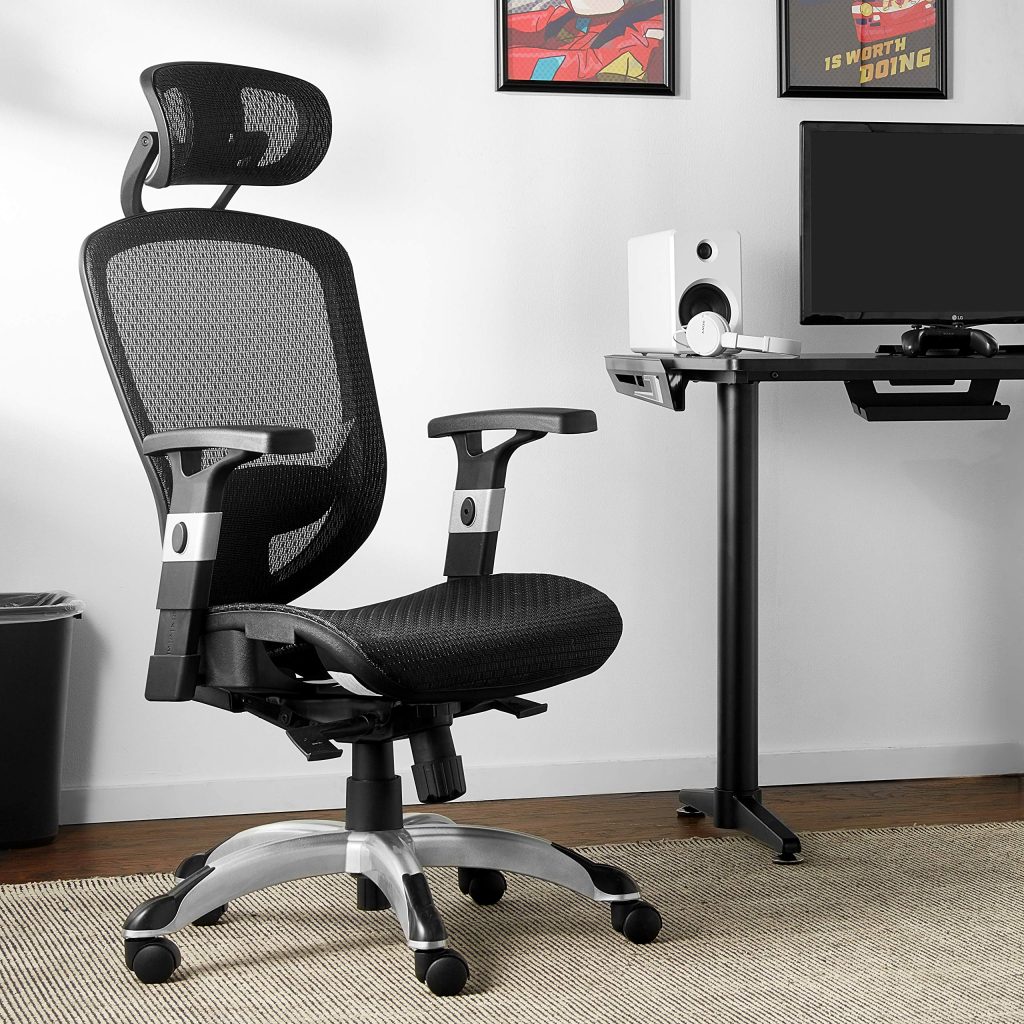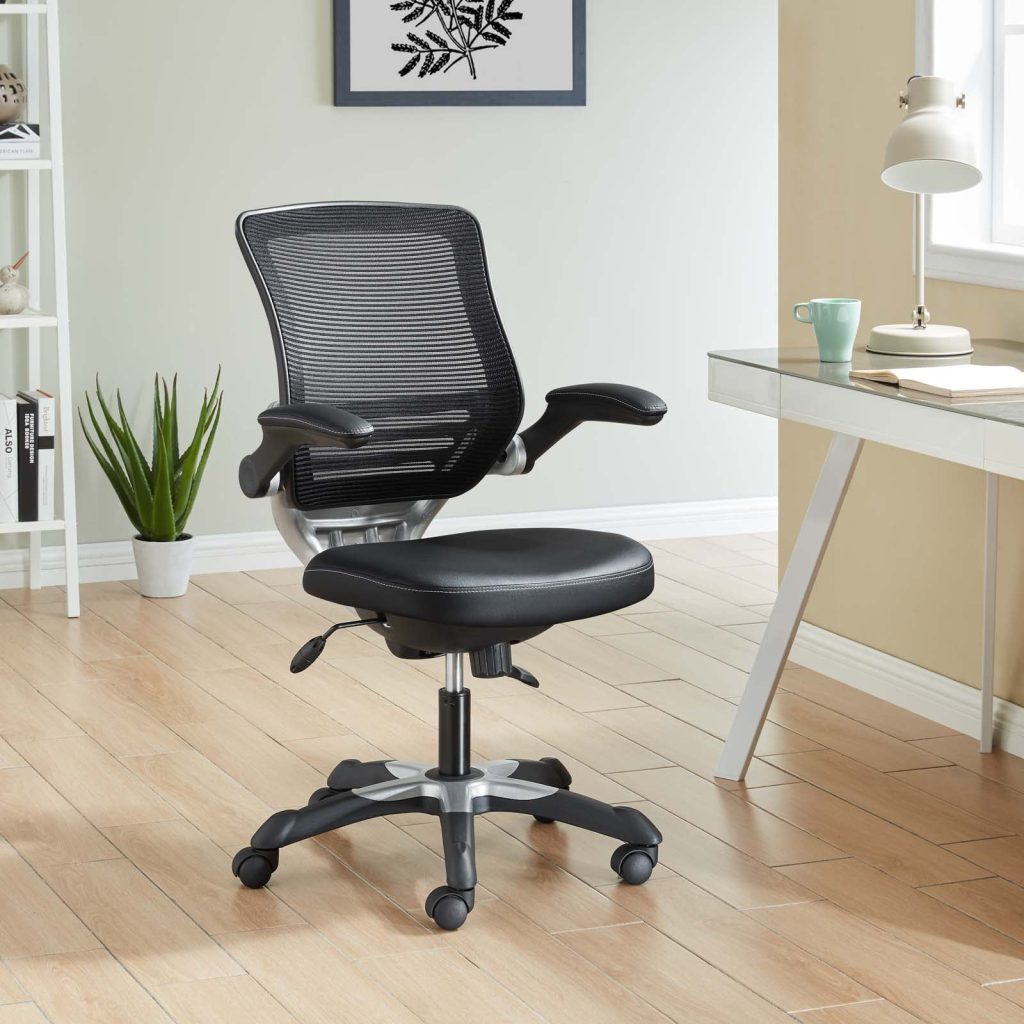With too many of us working from home, whether part-time or full-time, having an efficient and relaxing workplace where we live has never been more important. At work, we spend a substantial amount of time. Thus knowing how to choose an office chair that suits your work environment is important.

How To Choose An Office Chair
Finding the perfect ergonomic office chair is a smart investment, and the benefits to your well-being and productivity alone make it worthwhile. In addition, the right chair makes working from home more comfortable and can also be used for other tasks. Here are four easy-to-follow guidelines to help you choose the right ergonomic office chair for your home:
Seek out chairs with various back support options

Ergonomic chairs have various features, but you can still opt for one that offers several points of back support to ensure that you cover all of your bases.
Look for a chair with a reclining function, lumbar support, and a backrest that can be adjusted in height to give yourself the right features for work. Both of these things would increase one’s productivity.
From a fitness standpoint, an ergonomic office chair with a complete backrest will maintain proper balance while still relieving discomfort from lumbar or other back-related injuries or disorders.
Purchase one with a waterfall seat
The rounded front edge of the waterfall seats gives them their name. However, they are not only aesthetically pleasing; testing has demonstrated that chairs with waterfall-edged seat pans are the best at assisting you in maintaining proper posture.
They do this in two ways. First, they also relieve pressure and increase support behind your knees and on the back of your thighs while increasing blood supply to your lower limbs because of a gently sloped design. Second, the waterfall configuration distributes weight evenly around the whole seat pan, resulting in a much more relaxed seating experience.
Look for breathable upholstery.

The materials used to make a high-quality office chair are essential. They are necessary for aesthetics and offering a supportive seating environment around the seat pan, armrest, and backrest.
Since office chairs are designed to be sat in for long periods, it is safest to choose one that is upholstered in a breathable mesh. The primary purpose of this material is to maximise ventilation inside the seat, preventing it from being too warm.
This is especially important in the summer or in countries where it is hot all year, as working sweaty is never a fun experience. Mesh upholstery is also cleaner, softer, and less scratchy than other materials, making it the right substitute for office chairs.
Choose one that is strongly adaptable.
Simply put, the more adjustment points an office chair has, the more you can personalise it to your specifications and enjoy the ergonomic benefits. At a minimum, you can aim for a chair with an adjustable backrest, seat pan, and armrest.
Starting from the backrest, it should be able to tilt forward and backwards and recline or step closer for activities requiring more concentration. In addition, the seat pan should be adjustable in height, allowing you to adjust it to the correct height for your desk.
Finally, the armrest can be flexible in various ways, including up and down as well as forward and backward travel.
The location of your shoulders and arms on your office chair, which is often underestimated, significantly impacts whether a chair is comfortable. For example, a chair that requires you to shrug your shoulders to get your elbows on the armrest would easily give you pain and should be avoided.
Width and depth of the seat
Every person will be able to sit comfortably in the seat if it is big and deep enough. The standard is typically 17-20 inches tall.
The seat depth (from front to back) must be sufficient for the person to sit with their back against the ergonomic office chair’s backrest. Leave about two to four inches gap between the seat and the back of the knees. The seat’s forward or reverse inclination should be adjustable.
The Backrest
An ergonomic office chair’s backrest should be 12 to 19 inches high. If the backrest is independent of the bench, it can adjust height and angle. In addition, it should be able to support the spine’s normal curve, with particular consideration paid to adequate lumbar support.
The backrest will adjust forward and back angles if the seat and backrest are one piece, with a locking mechanism to keep it from going too far back before the user has measured the correct angle.
Swivelling
You can conveniently rotate every traditional or ergonomic chair so the user can access various desk parts without pressure.
Lumbar Support
A contoured backrest on your office chair would have the warmth and strength your back needs. Choose an office chair that is contoured with the spine’s natural contour. Any decent office chair will have enough lumbar support. You should position your lower back in such a manner that it is gently arched all the time so that you do not sag as the day advances.
Check out this feature so that you can get lumbar support when you need it. For example, to avoid pressure or compression on the lumbar discs in your neck, you need good lower back or lumbar support.
Warranty and Manufacturing
Ensure the ergonomic office chair has a decent warranty so it will be subjected to years of use. You can also look at where it is manufactured, how durable it is, and any certs it might have.
What Is the Significance of a Good Office Chair?
Aside from reducing back pain, getting a decent office chair has other advantages. With a comfortable, supportive office chair, you can escape the exhaustion and frustration of working on the same chair for hours.
Studies show happier employees are more active, leading to a more supportive work climate. Finally, finding the appropriate, convenient office chair decreases the number of breaks required by the employee due to discomfort.
What Is The Purpose Of An Office Chair? Is It A Good Investment?
Ergonomic office chairs are more costly than traditional office chairs, we understand. Consider that an investment in the well-being and efficiency of you or your workforce. The most important reason to purchase an ergonomic office chair is for your well-being. Spending too much time at your desk has been linked to an increased risk of contracting various severe illnesses.
In particular, sitting in a non-ergonomic chair can cause musculoskeletal disorders, affecting the muscles, joints, tendons, ligaments, and nerves. In addition, it can cause back pain by affecting your balance and placing pressure on your spine and backbone. It may also reduce blood supply, resulting in deep vein thrombosis and complications such as cervical spondylosis.
An ergonomic office chair can mould your body shape, promote good posture, hold your joints and tissues in a balanced position, and allow proper hip and pelvis alignment. This reduces the chance of injury and pressure, gives you more stamina, and allows you to concentrate without being distracted or in pain.
Ultimately, the benefits of investing in an ergonomic office chair are reflected in your job. The Washington State Department of Labor and Industries performed a compelling report if you are an entrepreneur considering delivering ergonomic office chairs to your employees.
They looked at 4000 people who converted to ergonomic office furniture and discovered that absenteeism decreased by 75%, error rates decreased by 56%, and time on the job increased by 40%.
By improving your workers’ workplaces, you’re growing their commitment and creating a more versatile atmosphere that can adapt to each employee. And, if our projections are correct, people looking for jobs would prioritise offices that support their employees’ well-being.
Furthermore, ergonomic office chairs are frequently high-quality furniture that can last for years and survive wear and tear.
What Are The Few Things To Keep An Eye Out For When You’re In Your Office Chair?
When choosing the ideal office chair, ensure it’s well-adjusted at your desk and ask yourself a few questions to ensure you have the right service.
Backrest: To have the greatest comfort, the back of the chair should come to, or over, the centre of the shoulder blades.
Lumbar Support: Does the lumbar support conform to the outline of your spine? Is your lower back well-protected?
Height: While sitting at a desk with a monitor, you should be staring at the centre of the screen if standing and leaning away. Are your feet flat on the ground at this point? Do you want a footrest if not?
Armrests: The armrests should be the same height as your bench. Is the distance between the rests and your body sufficient? Do you have a comfortable feeling on your shoulders?
Cushion: Is the seat comfy? Is this something that will last in the long run?
Conclusion
Almost every new home has an office, which necessitates the use of a comfortable ergonomic chair. If you’re using it for work or gaming, you need something that will keep you comfortable and foster good posture.
Choosing the right office chair is a task that takes some analysis, and if you follow the advice and suggestions in this article, you’ll find the office chair that best suits you.







